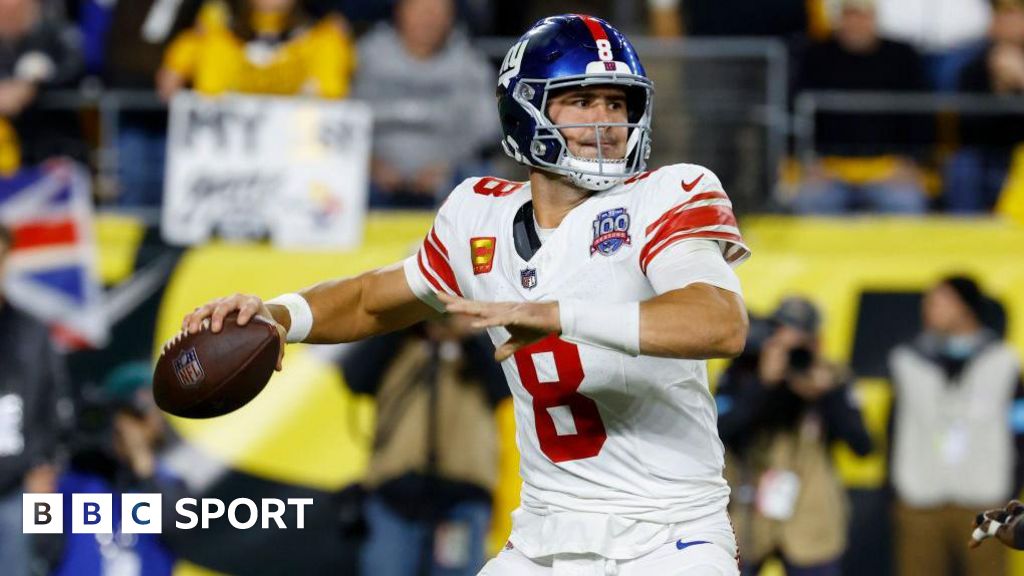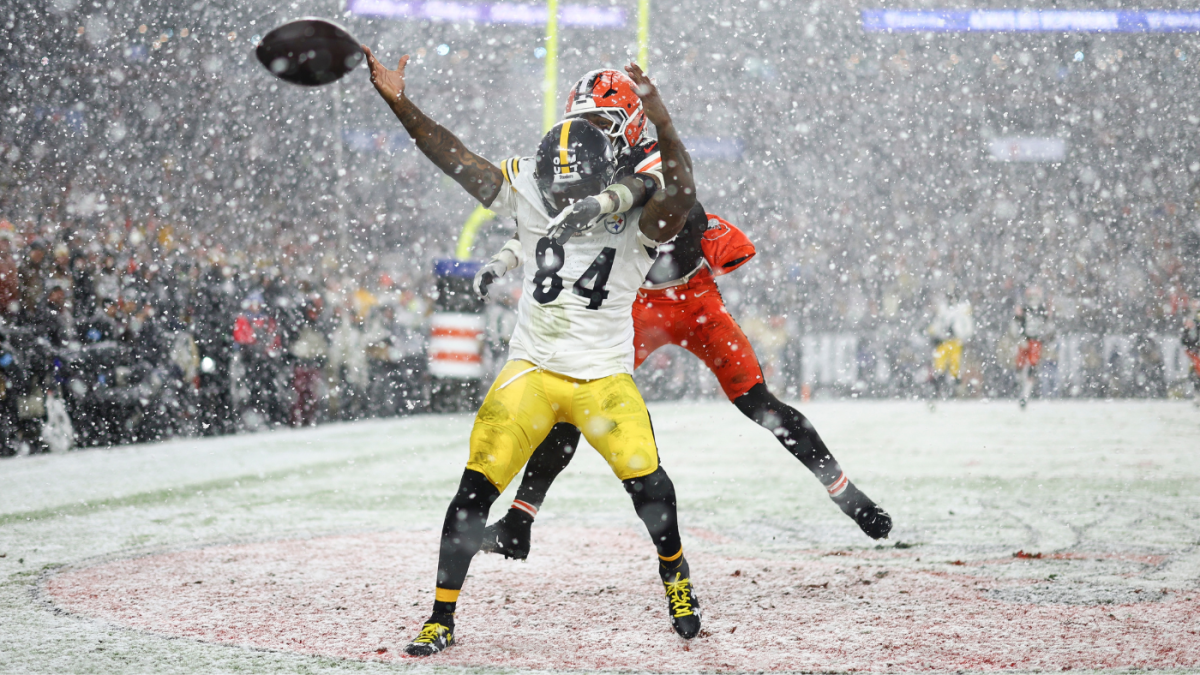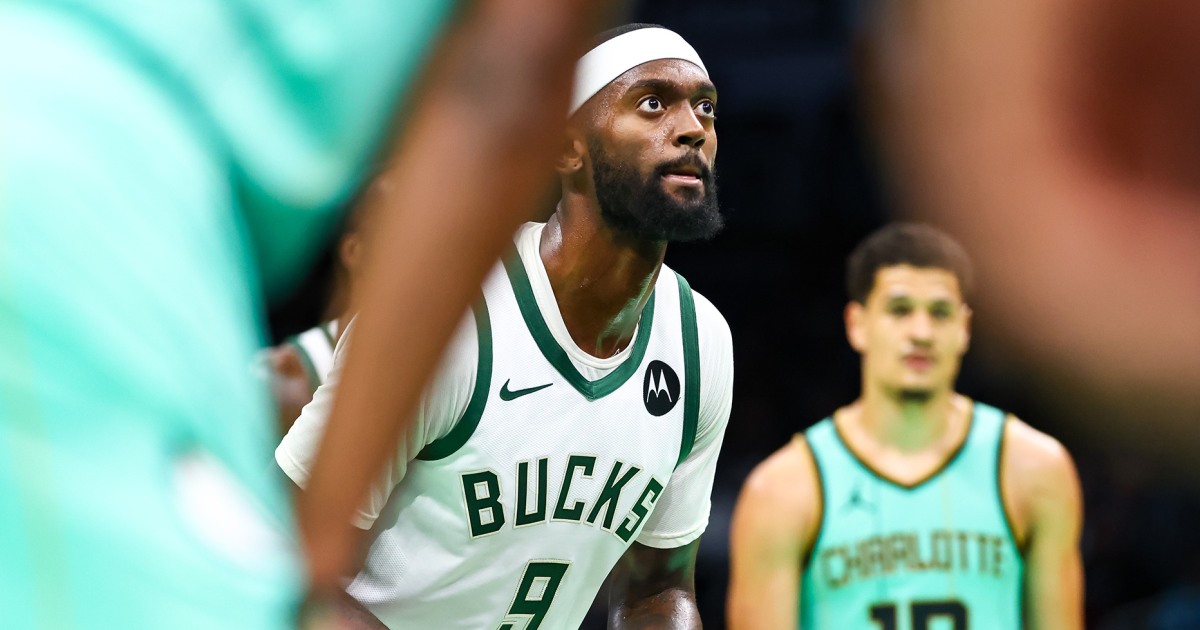2024 NFL Draft: Biggest questions surrounding the first-round quarterbacks | NFL News, Rankings and Statistics | PFF

• Caleb Williams has to get smarter in collapsing pockets: His 23.2% pressure-to-sack ratio and 3.6% turnover-worthy play percentage were both near the worst marks in the FBS in 2023.
• J.J. McCarthy tended to struggle when forced to look beyond his first read: When he gets the look he wants from the defense, he won’t hesitate to throw the ball with great anticipation. But when that look gets muddy, he struggles to move off it.
• Draft and trade for yourself: Try PFF’s Mock Draft Simulator — trade picks and players and mock for your favorite NFL team.
Estimated Reading Time: 5 minutes
Click here for more draft tools:
2024 Mock Draft Simulator | 2024 Big Board | 2024 Draft Guide
2024 Player Profiles | 2024 Mock Drafts | NCAA Premium Stats
Caleb Williams: Can he play in structure and limit the negative plays?
Williams is arguably the most talented quarterback prospect in recent years. His arm talent and play-making ability are second to none. However, in his last season at USC, Williams was almost forced to rely on plays out of structure. He had 50 dropbacks with a time to throw of more than 6 seconds in 2023 — the most in college football.
Because he played out of structure so often, Williams ended up taking way too many negative plays. His 23.2% pressure-to-sack ratio and 3.6% turnover-worthy play percentage were both near the worst marks in the FBS. He’ll need to clean up that decision-making, both in and outside of the pocket, to be a future franchise quarterback.
Drake Maye: Can he make the layups and limit the chaos?
Maye is an extremely talented quarterback with the arm and prototypical build to be a successful NFL quarterback. However, his accuracy on easy throws leaves a lot to be desired. His adjusted completion percentage on throws from one to nine yards downfield was just 82.8% in 2023 — the 40th-ranked rate in the FBS. A lot of that comes down to some weird footwork within the pocket that needs to be cleaned up.
Maye also has a propensity for chaos. When the play breaks down, he is athletic enough to get out of the pocket and make plays. It sometimes works out in the form of a left-handed touchdown throw while being tackled against Pittsburgh. Other times, it results in mind-numbing decisions where he tries to avoid a bad play but creates a disastrous one. Making the easy plays and limiting the disaster can unleash the potential that makes him so intriguing as a prospect.
Jayden Daniels: Can he avoid sacks and deliver when pressured?
Daniels is coming off of a Heisman campaign, and his athleticism paired with his ability to deliver the ball accurately downfield gives him a great chance to be successful at the next level. His concerns come from taking sacks and being able to deliver a pass under pressure. His career pressure-to-sack ratio is 24.5%, the highest in the draft class. That number dipped to 20.2% in his final season, which is an encouraging sign, but the career number is what sticks out, considering he was in school for five years.
When pressured, Daniels tends to immediately look to scramble instead of maneuvering the pocket and delivering throws. His 35 scrambles when pressured last season were the third most in the FBS, despite his being pressured on only 105 dropbacks, the 81st most. He’ll need to speed up his process and deliver in closing pockets to continue to elevate his game in the NFL.
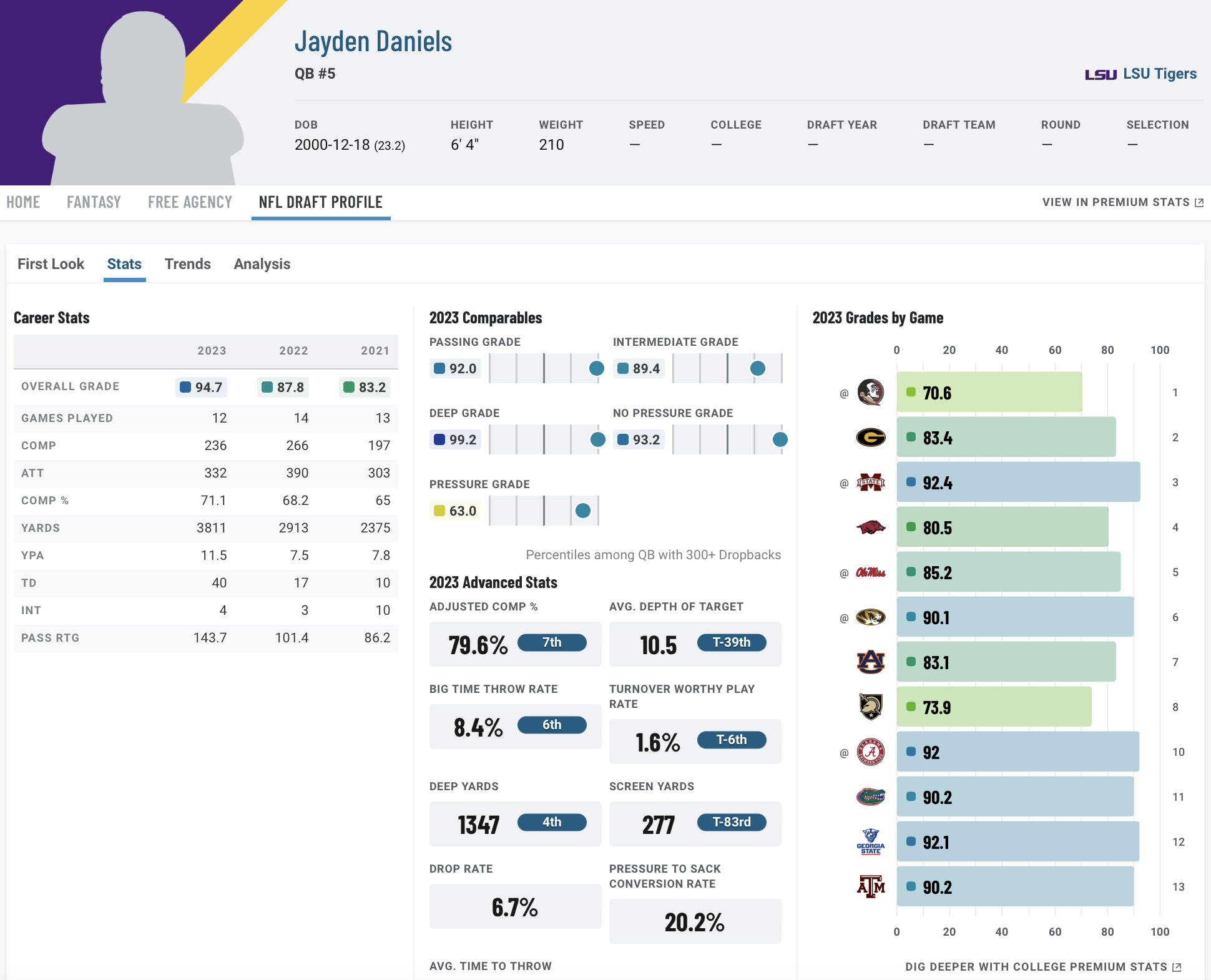
J.J. McCarthy: Can he deliver on outside throws and succeed when the first look isn’t available?
McCarthy finished his college career as an undefeated national champion. Despite that, he’s still a relatively young, inexperienced quarterback compared to his peers. He is athletic with an extremely strong arm and played in a pro-style offense, showcasing his ability to attack over the middle of the field.
McCarthy’s cause for concern comes from his struggles to accurately deliver the ball outside the numbers. On such pass attempts, he recorded a 27.1% uncatchable throw rate, ranking 48th out of 105 eligible FBS quarterbacks. That same stat is just 10.8% everywhere else for him, fifth best in the nation. He also tends to freeze up when that first read isn’t open. When he gets the look he wants from the defense, he won’t hesitate to throw the ball with great anticipation. But when that look gets muddy, he struggles to move off it.
For McCarthy to be successful in the NFL, he’ll need to clean up some of his mechanics on throws to the outside part of the field and get comfortable with his first read not always being open.
Michael Penix Jr.: Can he clean up his accuracy?
Penix enjoyed a long and, ultimately, successful college career. His experience can be an argument for him having a rather high floor as a draft prospect. Add to that his arm talent and ability to get through his progressions effectively and efficiently, and you have a case to be made for a first-round pick.
But accuracy was a concern. Penix’s 22.9% uncatchable inaccurate pass rate in 2023 is tied for the highest mark in the draft class. That number was never below 21% during his college career. It’s a huge worry for a five-year college quarterback, and it indicates that it may not be fixed once he gets to the NFL. Penix missed far too many easy passes, some of which stemmed from his throwing motion and mechanics. A quarterback’s mechanics can often be overblown, but when you have accuracy problems, like Penix, it can be detrimental.
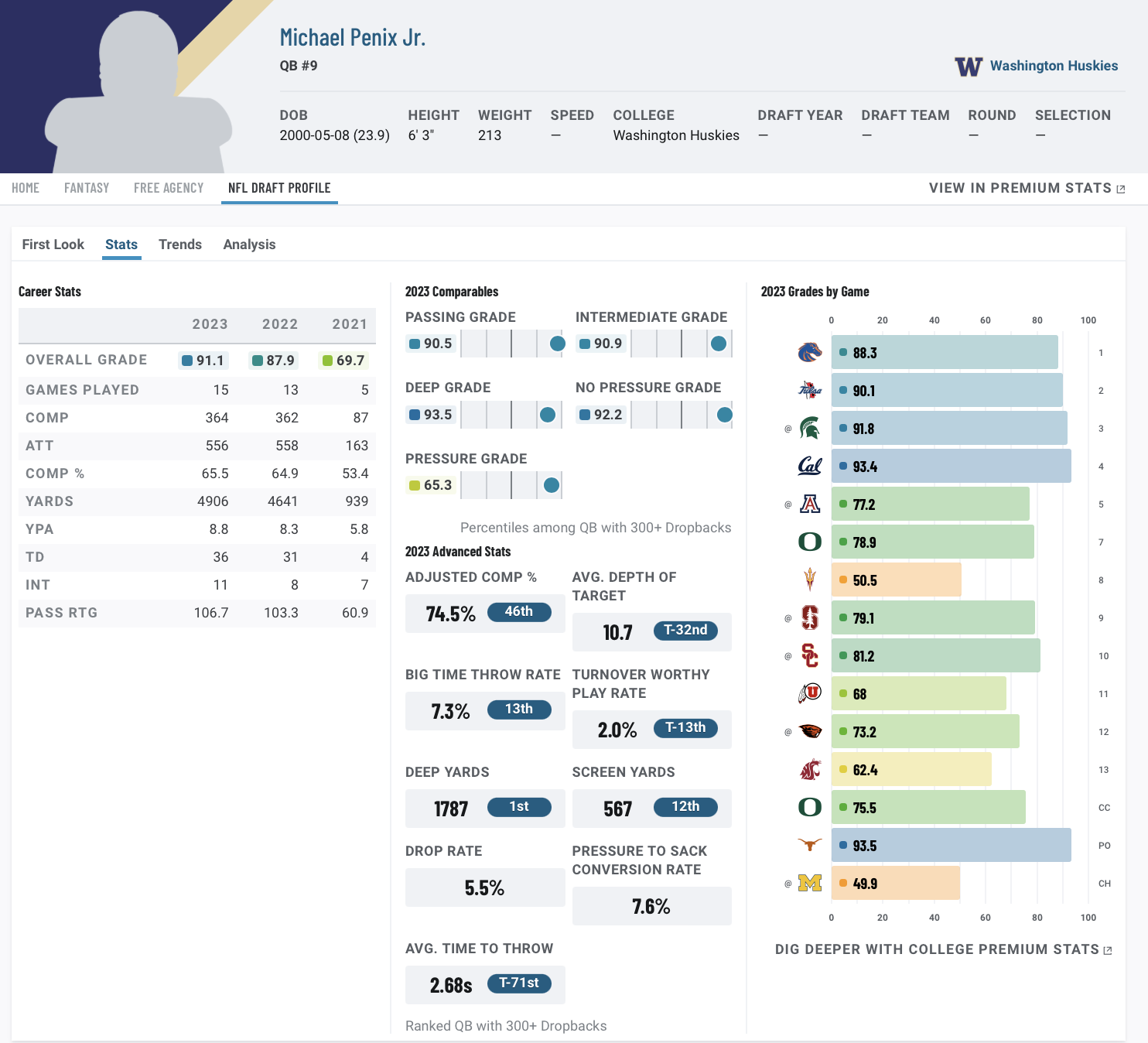
Bo Nix: Will his arm talent hold up in the NFL?
While Nix throws an effective deep ball, throwing deep isn’t the only thing to look at when evaluating arm talent. He tended to struggle a bit when needing to throw with extra velocity. Not being able to add that extra juice can be a problem in the NFL because it requires you to be on time with every throw.
Some quarterbacks can get away with being late on passes because they have that added velocity to fit the ball into tight windows. Nix struggled with that, at times, especially on throws from the opposite hash. It allowed defenders to jump the routes and either make a play on the ball or tackle a receiver immediately after they caught the ball.
Related
Daniel Jones released: New York Giants part ways with struggling…
The New York Giants have "mutually agreed" to terminate the contract of quarterback Daniel Jones, less than two years after he signed a $160m extension with the
Browns top Steelers in snow; previewing crucial week in NFL,…
This is an article version of the CBS Sports HQ AM Newsletter, the ultimate guide to ev
NFL gameday guide: Taylor Swift’s rival, Aaron Rodgers’ despair, Kyle…
Mob movies, Motown magic, more Aaron Rodgers-centred drama, the 'Harbowl' and rushing fireworks between Kyle Shanahan and Matt LaF
Saudi wealth fund’s expansion into North American soccer raises questions
A leading human rights organization has described a sponsorship deal between Concacaf and the Saudi Arabia Public Investment Fund (PIF) as sportswashing, critic

